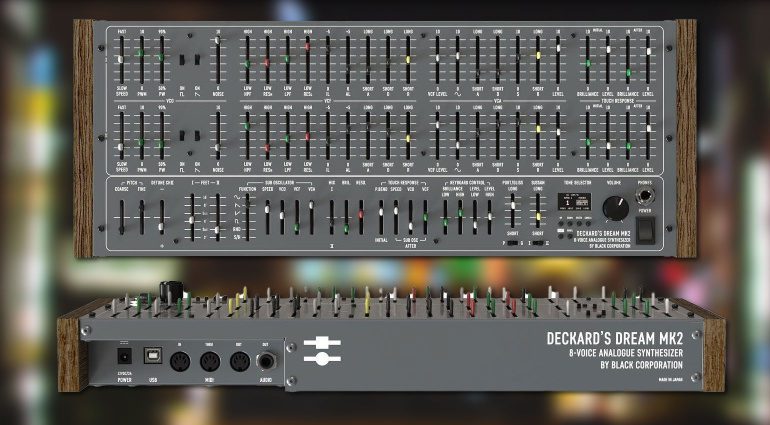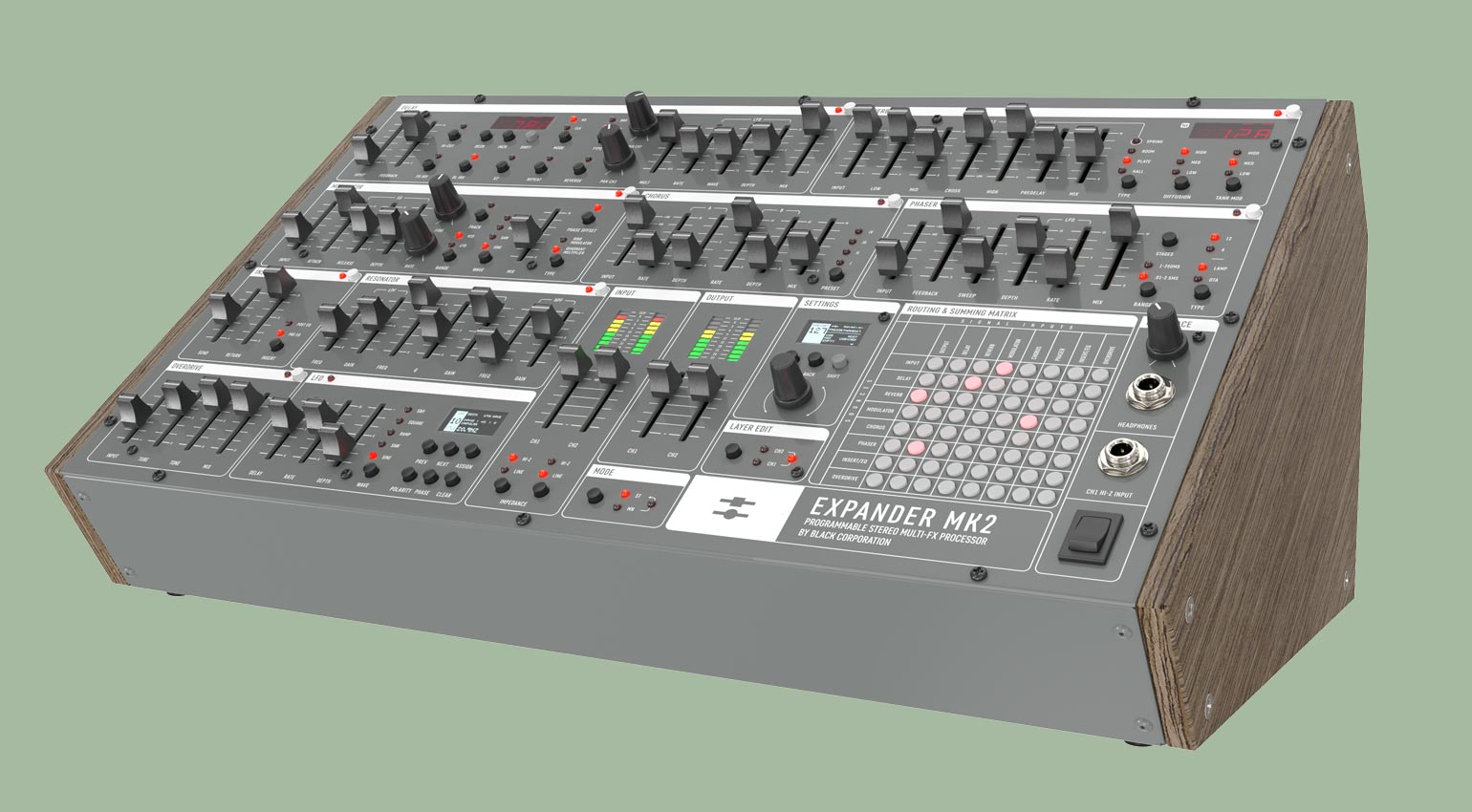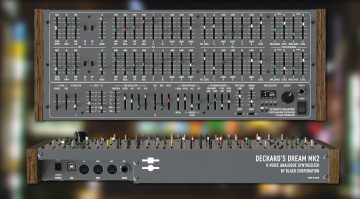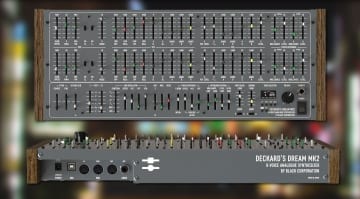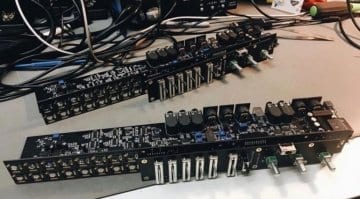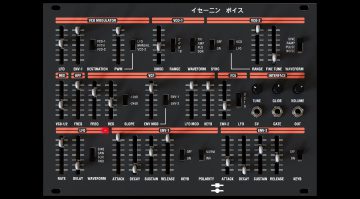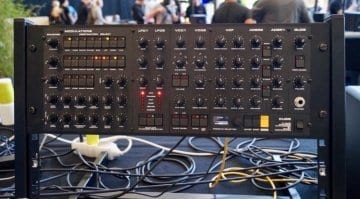Black Corporation Deckard’s Dream: Epic Sound Design
The Black Corporation Deckard’s Dream is no ordinary synthesizer. It is a journey into the past. Modeled after the Yamaha CS80, this noble synth takes you back to a time when analog polyphony demanded huge cabinets.
Namely inspired by Vangelis’ groundbreaking soundtrack for the movie “Blade Runner”, Deckard’s Dream allows today’s artists to experience the magic of this era. At the same time, thanks to new developments, musicians can use it to discover as yet unexplored sounds. Here we have three sound design tips for anyone who has the privilege of owning this machine. But they are also perfectly fine for synth heads who just want to know a little more about how the device works.
You are currently viewing a placeholder content from YouTube. To access the actual content, click the button below. Please note that doing so will share data with third-party providers.
To begin with, here is a brief overview of Deckard’s Dream’s layout: The top two rows of faders are identical and represent two voices with eight oscillators each. There is also an LFO for pulse width modulation, two filters (high-pass and low-pass) routed serially with resonance and ADSR envelope, and a VCA with the usual ADSR envelope. Additionally, there are a variety of global settings in the bottom row. Here, you can set the octave position of the oscillators, the modulation intensity of the third LFO, and after-touch effects.
Famous “Blade Runner” pads
Let’s start with the most obvious sound: with its bi-timbral architecture and a total of 16 oscillators, the Deckard’s Dream is ideal for epic pad sounds. With this many oscillators, you can make sound soft, noisy, epic, or brutal. Much of the sound design depends on the choice of oscillators: If you only use square waves via the toggle switch on the left-hand side, the synth sounds more digital. With sawtooth waves, things get even more epic.

Black Corporation Deckard’s Dream offers two voices with identical parameters · Source: Black Corporation
You tame that epicness with the Deckard’s Dream low-pass filter. Subtle modulations and gentle risers in the filter’s settings (cutoff and resonance) create dynamic textures. Finally, try playing the synth with a controller with polyphonic aftertouch. Depending on the “Brilliance” setting at the top right, it opens the filter together with the volume. Many sweet spots are hidden here.
Creating a dry bass sound on Black Corporation Deckard’s Dream
For basses, the selection of waveforms is important. Here, we recommend a combination of a square wave in the leading voice and one octave below the sawtooth wave for the second voice. Then, try different filter settings and envelopes to combine the two voices dynamically. The sinewave, which comes after the filter, is added to the lower voice. This makes it easy to emphasize the sound’s low frequencies.

Every sound, be it bass, lead or pad, is played through MIDI on the Black Corporation Deckard’s Dream · Source: Black Corporation
If you want to spice up your bass sound even more, use Deckard’s Dream’s LFO. If you assign very slight amounts to the filter’s cutoff frequency, the sound becomes much more modern and dynamic. In addition, adjust Attack, Decay, and Release in the Amp envelope. In particular, finding the right Attack time can make a big difference with bass sounds.
Black Corporation Deckard’s Dream: Un-brassing a lead
Lead sounds on Black Corporation Deckard’s Dream can quickly sound a bit brassy. There are a few things you can do to prevent this, including setting a bit of detune for the oscillators at the bottom left or playing the filters by hand during performance.
However, one of our favorite techniques is to add noise before the two filters and then slightly fade in the high-pass filter. Together with the aforementioned sine wave as a basis, you can create exciting overtone combinations that won’t get boring any time soon.
Experiments with the LFO and Rachael
There is also the LFO above. If you use it set to modulate the filter or its almost maxed-out resonance in the audio range, everything becomes a little noisier and even more exciting. But if that’s still not enough, you can also purchase the Rachael Eurorack module, including a preamplifier module.
Rachael is a replica of the classic ring modulator that was included in the original CS80 and offers precise ring modulation through an internal sine wave. Black Corporation has also announced the Expander MK2, which will include this analog effect from the Yamaha synth.
Conclusion
Black Corporation Deckard’s Dream is a truly unique synthesizer. From subtle “Blade Runner” pads to powerful bass lines and slightly detuned leads, it offers a wealth of possibilities to expand your horizons. At the same time, it always has a distinctive sound that is recognized everywhere. It’s not the craziest, most out-there sound, as the synth is missing any kind of FM possibilities, however.
You are currently viewing a placeholder content from YouTube. To access the actual content, click the button below. Please note that doing so will share data with third-party providers.
But then again, you can get there with effects. Tape delays such as the Space Echo emulated in many plugins or long reverbs such as in the Strymon Nightsky or the new Meris Mercury X might do the trick. But even without them, a lot is possible: in the hands of creative artists, the Deckard’s Dream becomes a gateway to infinite sound possibilities, ready to embark on an artistic journey – provided you have the necessary small change. Otherwise, of course, there are also various CS80 plug-ins.
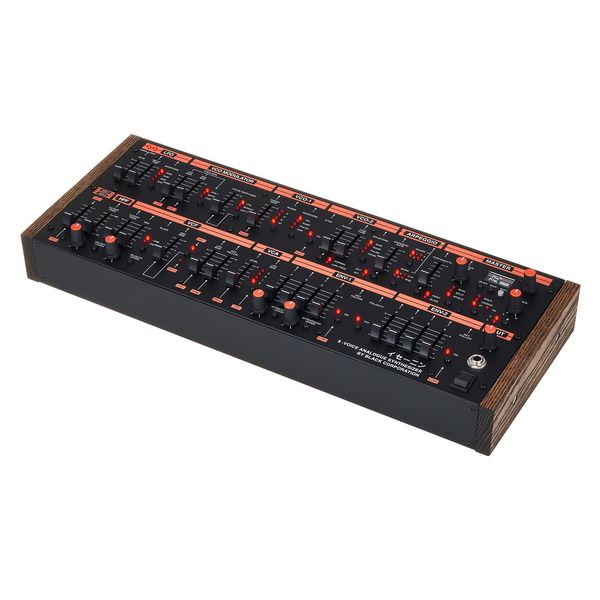
More on Black Corporation Deckard’s Dream
Originally published at Gearnews.de by Lucas Hermann. Translation by Julian Schmauch.
* This post contains affiliate links and/or widgets. When you buy a product via our affiliate partner, we receive a small commission that helps support what we do. Don’t worry, you pay the same price. Thanks for your support!

 3,9 / 5,0 |
3,9 / 5,0 | 